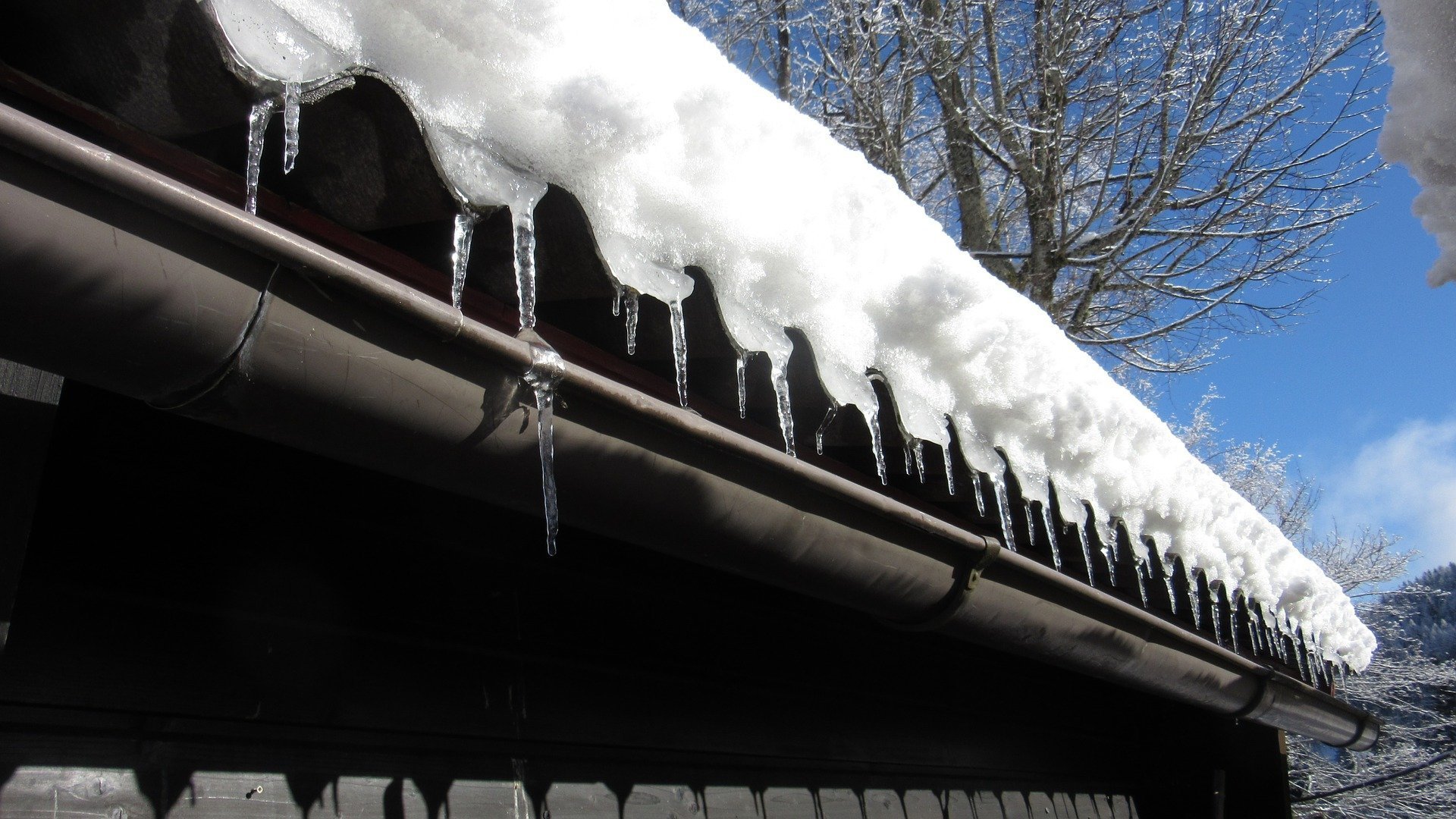Every winter Omaha receives several inches of snow and fluctuating temperatures outside cause icicles to form on roofs, putting strain on your roof. Just how does snow and ice damage your roof? This article will identify the most common and most damaging ways snow and ice damage your roof.
Snow Weight
Roofs are engineered to be incredibly strong and withstand a lot of weight. But the amount your roof can withstand steadily drops every year from decades of age, construction, shape, maintenance and weather exposure. Residential roofs are expected to support up to 20 pounds per square foot. Depending on its freshness and moisture quality, snow from a single snowfall can weigh up to 20 pounds per square foot; this weight increases after each snowfall. When ice forms on residential roofs, the resulting weight increases to almost 60 pounds per square foot.
Freezing Damage
In the event that temperatures fluctuate and cause snow on your roof to turn to ice, the accumulation of snow and ice could create cracks in parts of your roof or skylights. Cracks could result in either water leaks in your home or damaged shingles from freezing temperatures. The cost of fixing a ceiling leak and water damage could be hundreds of dollars, or thousands of dollars to fix a roof crack or damaged shingles. If you catch the issue early, you could save a lot of money.
Ice Dams
Ice dams are large chunks of ice that form on the edges of residential rooftops that block melted snow from properly draining off the roof. Ice dams are caused by ice damage and snow melting, flowing down the roof, and freezing at the edge of the roof. If enough water is backed up behind the ice dam, the moisture can seep under your shingles and cause significant leaks of moisture to the house’s interior. If the moisture isn’t addressed in a timely manner, it could lead to significant damage to your home structure and air quality from the growth of mold and mildew, and/or developed cracks and flashing damage to the roof. Read our blog post on How to Avoid Ice Dams from Forming on Your Roof.
Gutter Damage
When ice and snow melt and refreeze on your roof, it can cause significant damage to your gutters. If gutters are clogged with debris, moisture will likely refreeze gutters with heavy ice and increase the damage from ice dams. Heavy ice can cause serious damage to the gutters themselves and/or detach your gutters from the roof.
Snow & Ice Removal
Residents should not climb onto snow- or ice-covered roofs for accumulation removal: the additional human weight could be the additional stress on the roof that causes it to collapse. We recommend exercising caution and contacting a roofing professional if you notice a large collection of snow or ice on your roof.
For more information on shingle replacement, roof repair and other winter damage repair to residential roofs, please contact Exterior Remodel & Design by phone at (402) 861-0000 or by contact form.

